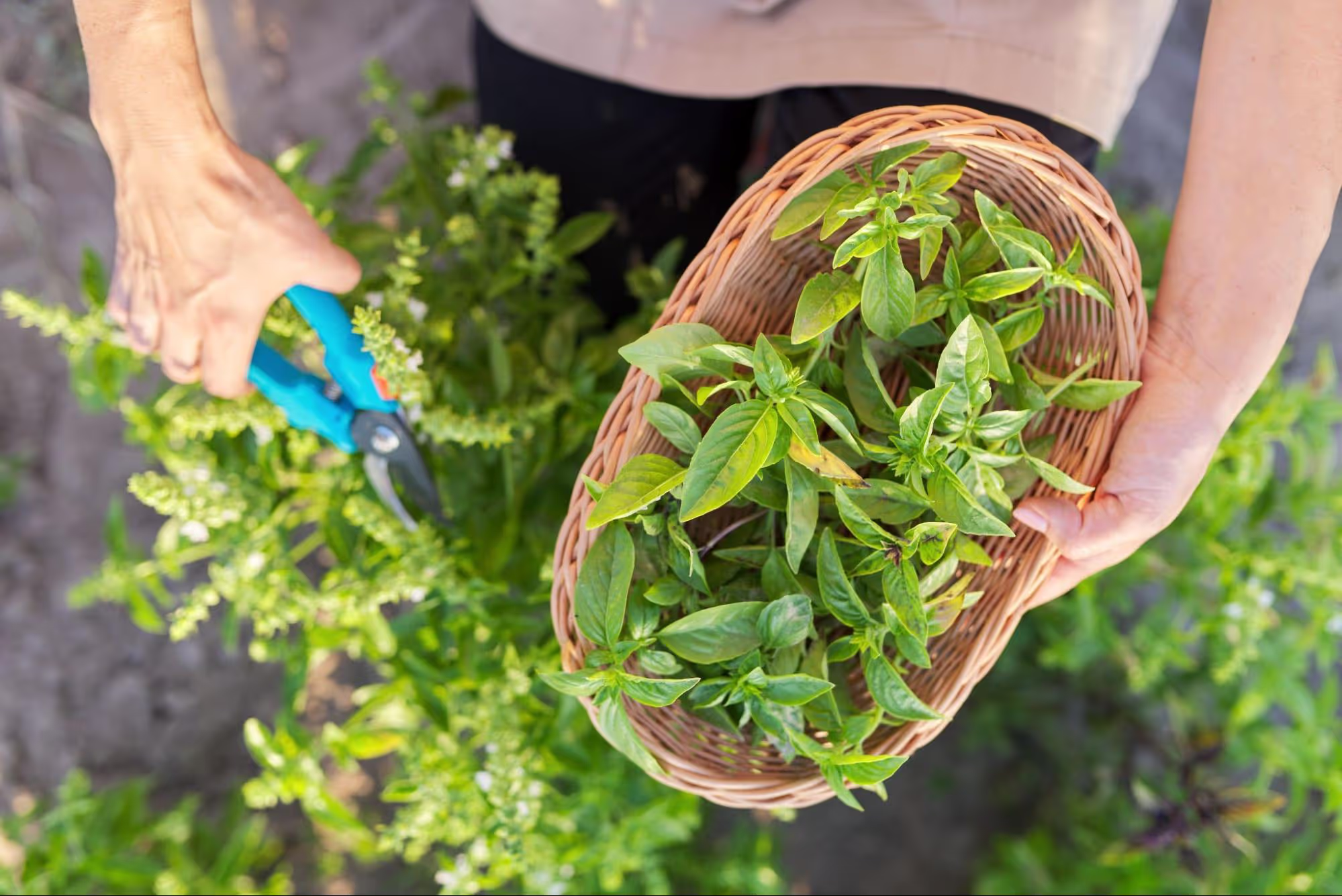
Thai basil is highly regarded for its unique flavor, aroma, and medicinal benefits. Given its use in traditional medicine, cuisine, and cosmetics, it is essential to preserve its health and quality. Although resilient to many conditions, Thai basil faces various threats, including diseases, pests, and adverse weather conditions. Protection and prevention of these threats are crucial for maintaining the health and productivity of the plant.
Pests:
Thai basil is vulnerable to various pests, including aphids, spider mites, and black flies. Aphids are small insects that suck sap from the plant, weakening it and making it more susceptible to diseases. Spider mites create fine webs on the underside of the leaves and can cause yellowing and leaf drop. Additionally, black flies, which appear in the soil, can attack the plant’s roots, leading to leaf drop and slowed growth.
Diseases:
Thai basil can be affected by various fungal and bacterial diseases, such as powdery mildew, downy mildew, gray rot, and the bacterial infection Xanthomonas. Powdery mildew creates a white powdery layer on the leaves, while downy mildew causes yellow spots and a grayish-white layer on the undersides of the leaves. Gray rot typically occurs in humid conditions, and the bacterial infection can lead to rot and watery spots on the leaves.
Extreme Weather Conditions:
Adverse weather conditions, such as high temperatures, frost, or drought, can seriously threaten the growth of Thai basil. The plant thrives in a moderate climate with consistent moisture. Prolonged drought or excessive heat can stress the plants, making them more susceptible to diseases and pest attacks.
Weeds:
Weeds can compete with Thai basil for water, nutrients, and light, slowing growth and reducing yields. Therefore, it is important to keep the area where Thai basil grows free from weeds.
Integrated Pest Management (IPM):
One of the most effective protection strategies for Thai basil against pests is the application of Integrated Pest Management (IPM). This approach combines cultural, biological, and chemical methods to control pest populations in an environmentally friendly way.
Disease Management:
Proper care and maintenance of plants can significantly reduce the risk of diseases.
Environmental Condition Control:
Creating suitable growth conditions is key to the health of Thai basil.
Weed Control:
Weed control can be achieved through various methods:
Using More Resistant Varieties:
Choosing Thai basil varieties that are more resistant to pests and diseases can significantly contribute to the sustainability of the production. Naturally resistant varieties reduce the need for chemical treatments and help maintain ecological balance.
Proper Plant Spacing:
Ensuring proper spacing between plants allows for good air circulation, reducing the risk of fungal infections and pest attacks. Plants that are spaced too closely are more susceptible to diseases and stress. Adequate spacing ensures that each plant receives enough light and nutrients for healthy growth.
Soil Testing and Management:
Regular soil testing is crucial to maintain optimal pH levels, the right nutrient content, and proper drainage. Healthy soil supports strong plant growth and reduces susceptibility to pests and diseases.
Regular Monitoring:
Proper and regular inspection of plants for signs of pests, diseases, or stress due to adverse conditions allows for early detection of problems. Timely intervention minimizes the impact on yields and helps maintain healthy plants.
Protecting Thai basil from threats such as pests, diseases, and extreme weather conditions is crucial for preserving the health and productivity of the plant. Implementing strategies such as integrated pest management, regular soil testing, proper planting, and using resistant varieties can significantly help preserve the plants and reduce the need for chemical treatments. Maintaining optimal growth conditions, such as proper watering, soil preparation, and weed control, ensures long-term yields and the health of Thai basil.